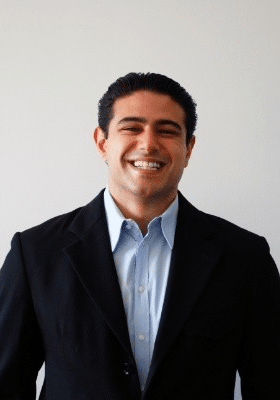Cyrus Dorbayan Talks Remaking Los Angeles
Alumnus Cyrus Dorbayan received a Bachelor of Architecture from Woodbury in 2014 and a Master of Science in Architecture with an emphasis on Urban Policy from Woodbury in 2015. A native of Los Angeles, Cyrus served as an international peer adviser, as well as student president of AIAS. His degree project focused on place-making through historical value and how to energize space through civic engagement. He would later join Woodbury’s Urban Policy Center and focus on a bottom-up approach to urbanism infusing civic needs to generate a program for architectural space. We caught up with Cyrus to ask him about his career and how see cities evolving into the future.
Interview with Cyrus Dorbayan
 Q: Why did you choose to study architecture?
Q: Why did you choose to study architecture?
I studied architecture because it helped me combine my three passions in life: creativity, leadership, and empowerment. As an architect, it is your responsibility to move the built environment forward in a positive way. If you take this into account, and factor in the economics, you are left with a complex and interesting foundation for a career. As my own career develops, I continue adding traits that can compliment my strong architectural foundation. This led me to discover new angles in our business and other businesses that come secondary to our field. I truly believe that most architects are one trait away from being more powerful and influential in their community.
Q: You’ve seen Los Angeles evolve in recent years, including through your work with the City of Los Angeles. What role do you believe architects play in urban development?
At the Los Angeles Mayor’s Office, it was very clear that there was lack of comprehensive and user friendly methods available for architects and designers to have open dialogues with their elected officials and city staff. We discovered this was a side effect of the city’s lack of data on the properties that they control. Our solution was to first clean the city’s data, then procure an asset management system and establish pilot projects. Though we were able to make huge leaps forward in asset management and community engagement we found there was still room for technology to continue to make our lives easier. We still have forms of engaging with the public that, though necessary, do not always attract thoughtful conversation, due to limited access and work hour availability. Through technological adaptation and private sector partnerships, I believe government will be able to better serve the public and push the development of assets by looking at them holistically and strategically. Once government can create a framework for strategic asset management which is proactive rather than reactive, it can allow capital to free up for architects and engineers to build in cycle projects that are policy based and not political. If frameworks, like the one I just described, can be established in more cities, architects will inherently have a positive effect on urban development.
Q: As a Project Planner at IBI Group, how do you see the implementation of technology in urban environments evolving in the coming years?
I believe we are at a pivotal point in architectural practice. We are beginning to find other ways to serve our clients through technology and at IBI we are exploring the implementation of technology in urban environments through virtual reality, augmented reality, blockchain, and the internet of things. In upcoming years you will begin to see the most complex architectural and urban development projects that have ever been built.
Q: Architects constantly face questions of narrowing project scopes. With so much of the world in flux, through changes to climate, technologies, and construction techniques, how will architects adapt ways of practicing to advance the profession and continue staying relevant?
By staying in the trenches of the architectural practice, most firms do not dictate how they can adapt to the world in flux. When you discover that you can use your associative thinking to differentiate yourself, you begin to see buildings that combine 21st century luxuries, policy incentive, sustainable materials and multi-module transportation systems for their users. In my opinion, whichever architect uses the power of associative thinking the best will be able to “push back” the flux of the world the hardest.
Q: What advice would you give to young designers who aspire to follow a similar career path?
Don’t forget how powerful your voice as an architect/designer is! Be curious! Learn the economics, the policy, and then never stop learning. Read the paper, seek mentors and stay in close touch, go to conferences, and suit up! You are important!
Q: What do you believe is the impact studying architecture had on your career as a designer?
Studying architecture gave me discipline, associative thinking, public speaking, technical knowledge, and the ability to thrive under pressure. I believe these tools can be some of the the most powerful traits someone can possess. If you can combine these traits with other fields of study you are interested in, you will be unstoppable. Architecture enables you to connect things differently than others. In short, the impact studying architecture has had on me was the foundation of my formula. As Einstein delved into the theories of acceleration, I delve into the theory of associative thinking. I intend to showcase the power of associative thinking and how we can begin serving non-typical industries and flourish in our own industry. In turn, we can begin to have all industries seeking architects as thought leaders across the world.